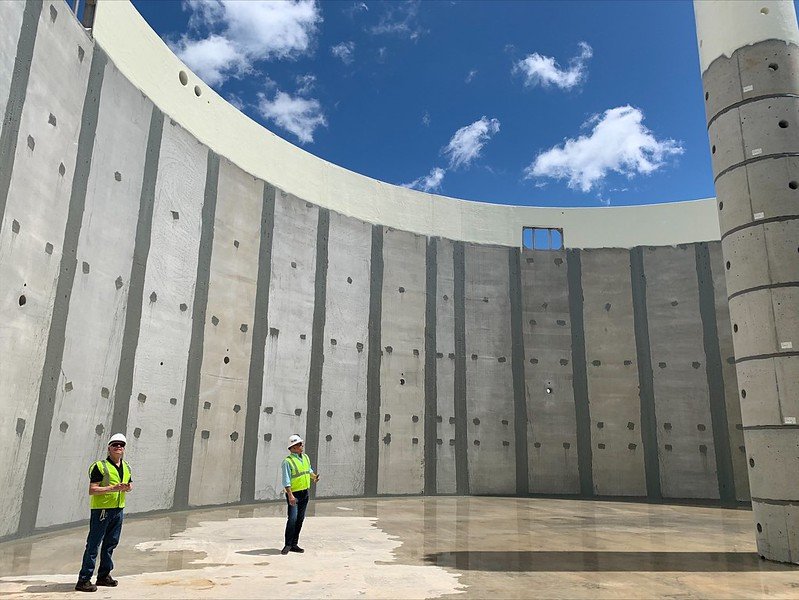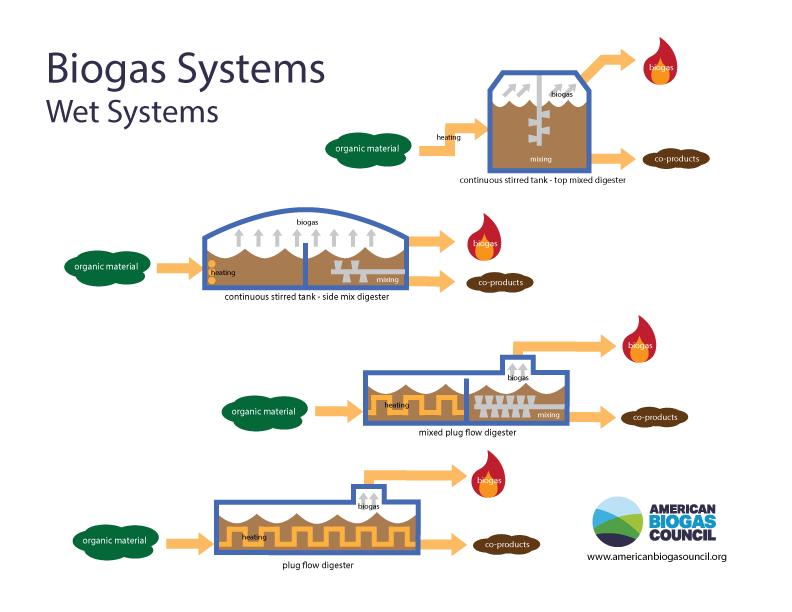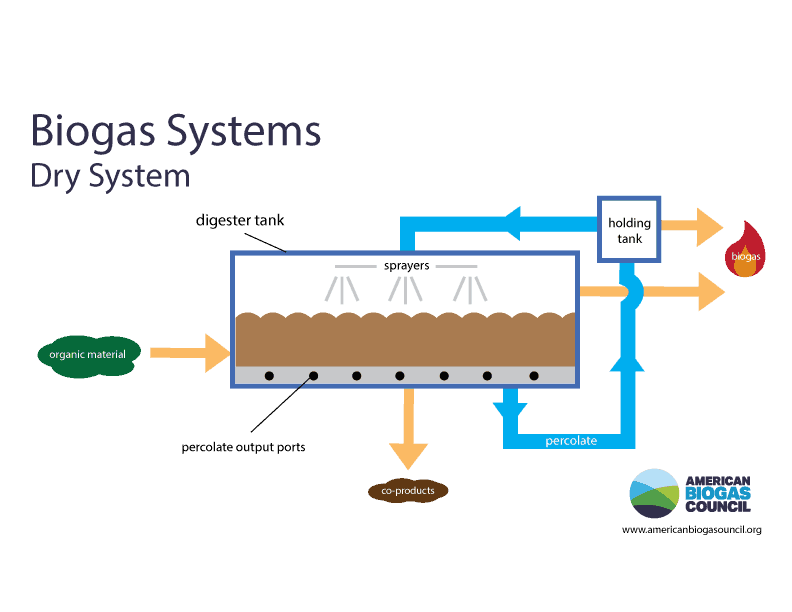Types of Biogas Systems
There are many configurations of anaerobic digesters and can run at different target temperatures the most common of which are Mesophillic (95 F, 35 C) or Thermophilic (125 F, 50C). There are different populations of anaerobic microbes that thrive in these temperature zones. Digesters can combine all the main process chemistry steps (hydrolysis, acidification, acetogenisis, methanogenis) either in a single process reactor tank or in two separated reactor tanks. While separation of digestion phases allows for some additional process control, it incurs additional capital costs for the additional tanks and monitoring. Read more in “Anaerobic Digestion & Biogas” by Paul Greene (2014) >>

The most common digester style is called a “Wet Digester.” They are known as “wet” due to all the substrates being able to be moved around as liquid slurries and mixed by pumps. The consistency of these digesters contents is usually 3-15% total solids. Typical retention times range from 20-40 days.
Farm based digesters also come in lagoon or in-ground plug flow reactors. A newer digester style is an Anaerobic Membrane Bioreactor (AnMBR) that uses a membrane filter at the back end of the facility to separate reactor slurry solids from the digestate liquids and hold solids in the system. Yet
another system is a multi-phased digester with hydrolysis step and a methanogenesis step, sometimes with interstage solids separation of inert solids, which can allow for optimized residence time. (Greene, 2014)

Dry digesters keep the substrates in a stackable form and remain in a pile during the digestion process. Food waste is mixed with green wastes such as yard debris for structure and porosity and is put into a long, rectangular vessel in a stack. The vessel is then sealed tight and warmed. Warm water, or percolate, is sprayed over the waste stack, collected and recycled. The percolate is biologically active which accelerates the digestion process. Percolate is sent to a separate methanization digester tank where the biogas is generated and the percolate recycled. There are also vertical down-flow reactor configurations where waste is fed in the top and allowed to flow out the bottom a number of days later while digesting along the way. (Greene, 2014)

